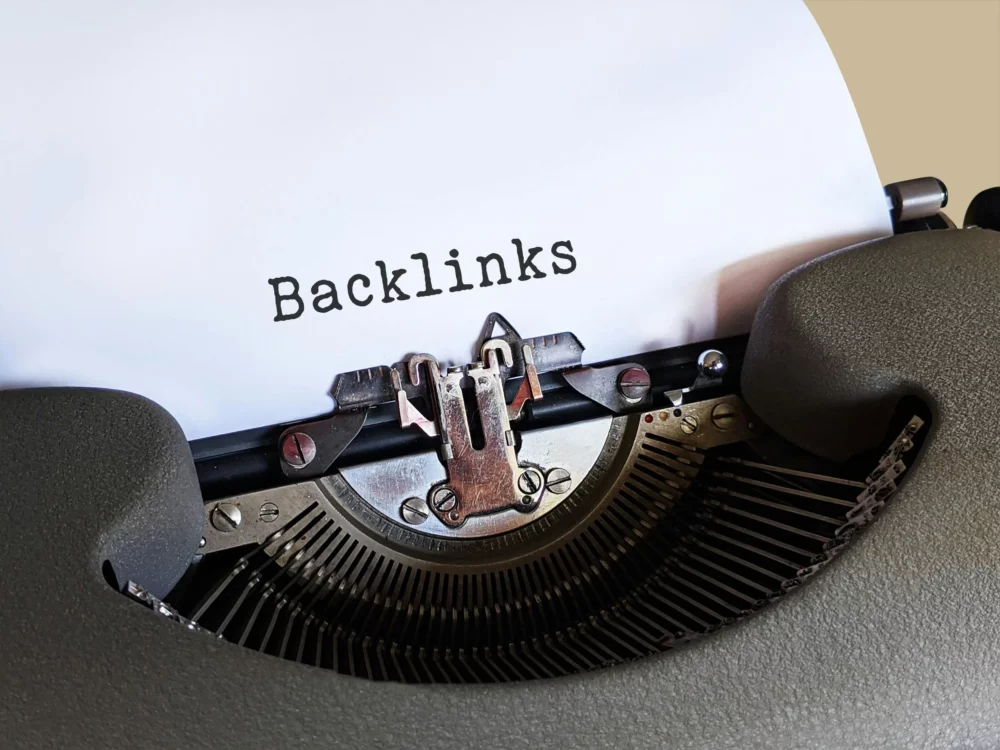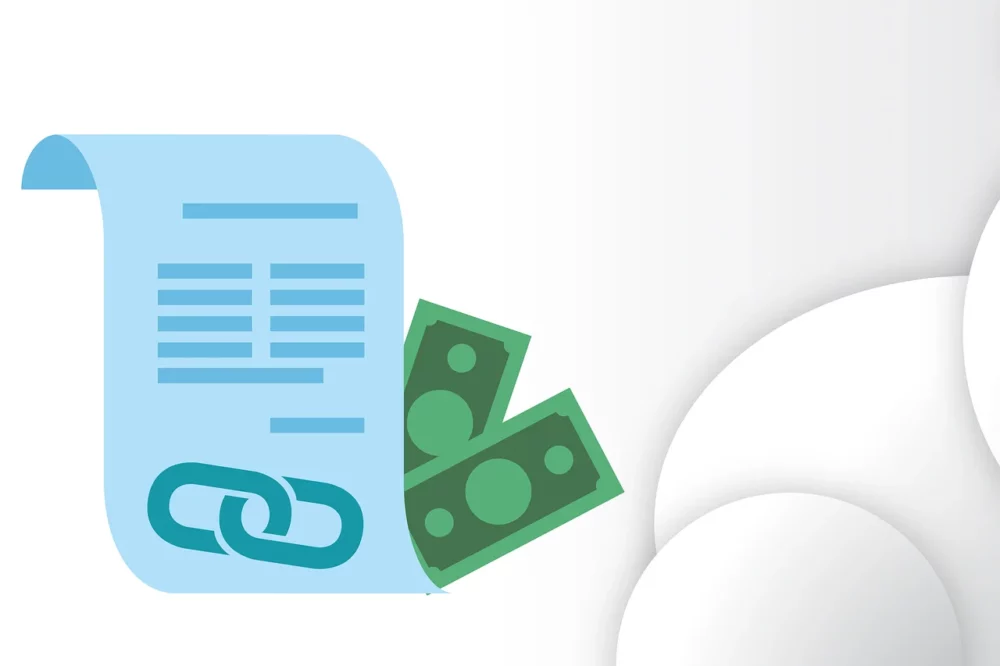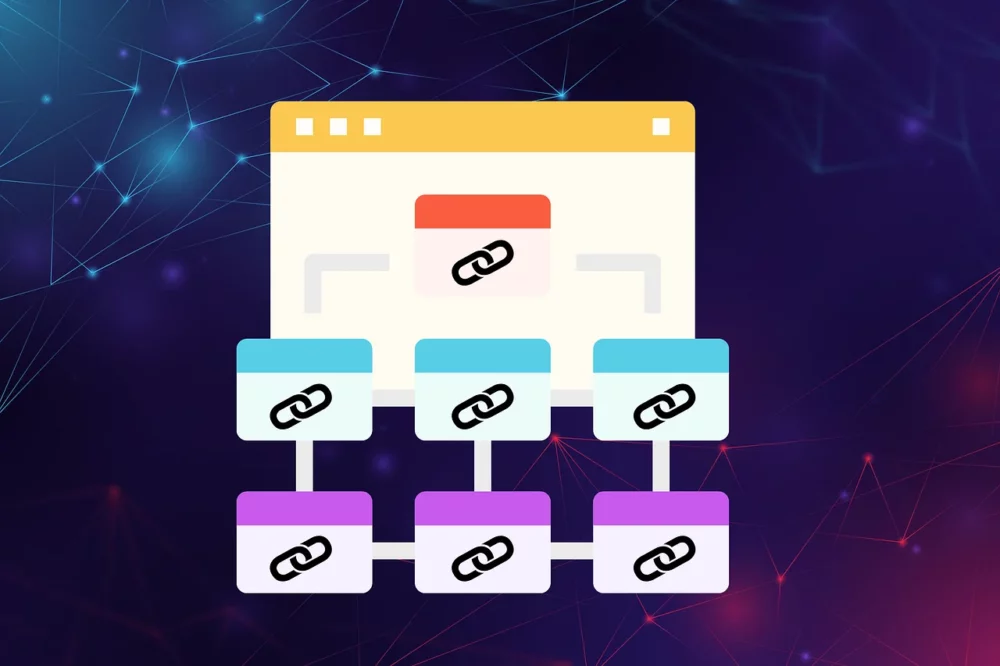Whether you’re experienced in digital marketing or a business owner aiming for better online visibility, understanding the details of backlinks is crucial for success in the competitive online space.
Here, I will explain backlinking, teach you how it works, and show you how to use it to boost your digital presence.
So, let’s together discover if backlinks still work after so many regular updates from Google.
Content Outline
What are Backlinks?

If you’re not familiar with SEO, you might wonder, “What’s a backlink?” Well, it’s a link from another website to yours.
Good-quality backlinks can make your website show up higher on search engines so that more people can find it.
Backlinking is just one part of SEO. When it happens outside your website, it’s called off-page SEO, which is different from on-page SEO, which is about the stuff on your site.
Think of high-quality backlinks like recommendations. Other websites suggest people check out your content to learn more about a specific topic.
Why are Backlinks important?
Website owners want backlinks for two main reasons. Firstly, it’s practical because it helps people find their site when they search online.
For example, if someone is looking for information about hedgehogs and comes across a link to a hedgehog mapping site, they might click on it, explore the site, and even become a fan who shares the link with others.
Links basically help internet users move around the web, and the more links a site has, the better the chances of people discovering it.
The second important reason for backlinks is more complex, but let me break it down into three simple points for better understanding.
1. Indexing and crawling of backlinks by search engines
It is not only people who use backlinks to navigate the web. Search engines, such as Google, use programs called crawlers, bots, or spiders.
These programs move through the web by following links, discovering content along the way, and then adding that content to their index. For a search engine to show a page in its results, it needs to find it first, and the most straightforward way is through a link.
2. Backlinks as a ranking signal
Search engines, like Google, don’t just use links to move around the web and find content; they also use backlinks to decide how important a web page is in their search results.
Think of each backlink as a “vote” for the value of the linked page.
If your page about hedgehogs has 500 backlinks from different sites, and a similar page from a competitor has only 3, Google might think your page is more valuable.
According to Google, backlinks are one factor they consider when determining a page’s visibility. This connects with the “A” (authority) part of Google’s signals, which looks at whether other websites see your page as an expert source.
This recognition comes when other sites link to or mention your content.
For instance, if a gardening or wildlife site links to a hedgehog mapping website, Google considers this a sign that these sites consider the mapping website trustworthy on the subject.
The more relevant sites link to your content, the better chance your page has of being seen as an expert source in Google’s search results. So, getting many good quality backlinks from reliable websites has become a crucial part of SEO.
3. Backlinks as a source of competitive intelligence
Because backlinks play a significant role in how pages and websites show up in search engine results, figuring out who is linking to your competitors can help you know where to get links to compete or do even better.
Basically, you want links from good-quality websites that are related to yours.
To understand this, consider the connection between websites or pages. For example, an eco-friendly gardening site that also explains how to include hedgehogs in your garden makes sense.
However, it would be strange if a fashion site, fashion store, or cooking site were linked to the hedgehog site.
When checking your competitors’ links, you should see if all their links are from good sites or if some might be spammy or not so great. To do this for your own or your competitors’ links, you’ll need to use SEO tools that show all the links in one place.
Are there disadvantages of backlinking in marketing?
While having backlinks is important for your website to show up on search engines, building them correctly can help your SEO strategy. Google and other search engines have specific rules for how websites should get backlinks.
If you gather backlinks that break these rules, your website rankings may drop.
Search engines can see getting too many backlinks too fast as spammy. In the past, some marketers used to buy backlinks easily, so search engines have become stricter.
If you get a lot of backlinks quickly, it might seem like you’re using shady tactics. These backlinks, called toxic backlinks, might all have the same text or come from untrustworthy websites.
Even though backlinks are important, they’re not the only factor in determining your website’s ranking. If you spend too much time getting backlinks and need to spend more time creating good content that meets user needs and uses keywords, your pages may need to rank better for the words you’re targeting.
Getting backlinks takes time, and if you try to do it yourself, you might end up with links from low-quality websites that can hurt your rankings.
Instead, it’s better to focus on getting high-quality backlinks from other trusted and popular websites. While top-ranking pages usually have lots of backlinks, small businesses should concentrate on building quality backlinks rather than aiming for the most.
What makes a good backlink?

Knowing what makes a good backlink is crucial for creating an effective strategy. The best backlinks are relevant, authoritative, and bring actual visitors to your site.
Relevance is key – your backlinks should be on sites or pages related to what you’re sharing. For instance, if you sell dog products, look for backlink opportunities on dog-related blogs. Readers of a dog blog are more likely to click your link than readers of a beauty blog.
Authority matters because backlinks from high-authority sites are of higher quality and pass on their authority to your page. However, this is only sometimes true since the authority is shared among all backlinks on a page.
While high-authority websites sometimes have low traffic, considering traffic is important. The more traffic a site gets, the more likely it is to send visitors to your page. However, backlinks from high-traffic pages might not directly impact rankings.
The type of backlink is also crucial. There are two types: dofollow and nofollow links. Dofollow links have more influence on rankings, so prioritizing them in your strategy is a good idea.
Consider the anchor text used for your backlinks. This is the clickable text containing your site URL. Avoid using keyword-optimized anchor texts, as they can appear spammy to search engines. Instead, use natural anchor text that fits well with the website content.
Backlinking’s main goal is to increase website traffic and boost rankings in search results. However, it’s crucial to remember that the true purpose is to enhance website visibility and attract visitors.
If your backlinks aren’t driving traffic, they’re not effective. Treat backlinks as a tool to increase site traffic and visibility rather than a way to manipulate search engines.
Measure the impact of your campaign to identify which backlinks bring the most traffic and improve your strategy accordingly.
Make sure to link to other sites besides your own

If you’re into SEO, you probably know about backlinks and internal links. Backlinks boost your website’s authority, while internal links help search engines understand your site’s structure.
But there’s another link to think about external links. This happens when your site links to another site. It seems like you’re sending people away, but these links can be great for SEO.
External links make you look more credible because you can show where you got your information. This helps search engines figure out how relevant and useful your pages are.
You might need help with better website SEO. Mailchimp makes building backlinks simple. It helps you create a list of websites to contact.
You can also earn backlinks by creating helpful content for your blog and landing pages using Mailchimp’s website builder.
This improves your SEO and content strategy.
How Do You Build Backlinks?
Now that you know backlinks are important, how do you actually get other websites to link to yours?
What’s the best way to build links to and from your site, which is crucial for a successful SEO campaign and improving your organic ranking?
Simply having lots of backlinks or getting links from just one website won’t make a big impact on your ranking. Old strategies like these need to be fixed. Nowadays, the focus is on your content and how authoritative you are on a topic. Here are some modern strategies:
- Guest Blogging: Invite others to write content for your site.
- Original Research: Share unique insights or findings.
- Influencer Relationships: Build connections with influential people.
- Guest Posts on Industry Sites: Write quality blog posts for other sites in your field.
- Link Reclamation: Fix or reclaim broken or lost links.
To manage and understand your backlinks, tools like Majestic, Buzzstream, and Moz can help.
What makes a backlink good or bad?
Good Links:
1. Trusted Sources: Come from websites that are trustworthy and relevant to your content.
2. Earned Naturally: The result of your content is so good that others link to it because they want to, not because you paid them.
3. No Exchange of Money or Perks: This will happen without any money or perks being given in exchange for the link.
4. Thoughtful Requests: These are requested carefully and not by sending out mass link requests to irrelevant websites.
5. Diverse Anchor Text: Use different words or phrases for the clickable link text instead of using the same one too many times.
6. Expected Destination: Take users where they expect to go without redirecting them to a different, unexpected website.
7. Visible to Everyone: Can be seen by both people and search engines without any attempts to hide them.
Bad Links:
1. Paid Links: Result from exchanging money or perks for links.
2. Large Scale Exchanges: Happen as part of big link exchange schemes.
3. Engaging in Spam: Come from sites involved in paid link schemes or other spammy activities.
4. Hidden Links: Include attempts to secretly add links to web pages by exploiting security flaws.
5. Keyword Overuse: Show a pattern of using the same keywords too much in link text to manipulate search engines.
FAQs
❓What are backlinks and why are they important for SEO?
🤔Can YouTube be considered a backlink?
Yes, YouTube can serve as a valuable backlink. Utilizing YouTube backlinks not only enhances brand awareness through its extensive audience but also guides viewers to your website. Additionally, linking from your YouTube channel to your website aids search engines in recognizing both entities as part of the same brand.
👉What do Tier 1, Tier 2, and Tier 3 backlinks refer to in SEO?
In SEO, Tier 1 backlinks are high-quality links originating from reputable sites, Tier 2 consists of medium-quality links from Web 2.0 sites, and Tier 3 comprises low-quality links typically found in comment sections and forums. These links, pointing to your website (referred to as the money site), serve to transfer link juice, contributing to overall SEO strategy.
Quicklinks
- What Are Internal Links
- Follow vs NoFollow Links Explained
- How to Find and Analyze Backlinks?
- How to Promote Affiliate Links?
- Headway vs Blinkist
Summing Up- What Is Backlinking?
Backlinks are super important for SEO because they help people and search engines discover your website, affecting how well it shows up in search results.
If you play it fair and avoid spammy tricks, getting backlinks from reliable online sources can boost your website’s visibility. But, if you use spammy tactics, you could get in trouble and face penalties.
Nofollow links can lower websites’ risk, but most people aim for followed links. Many myths about link building exist, so it’s crucial to get reliable information to understand this important topic.
